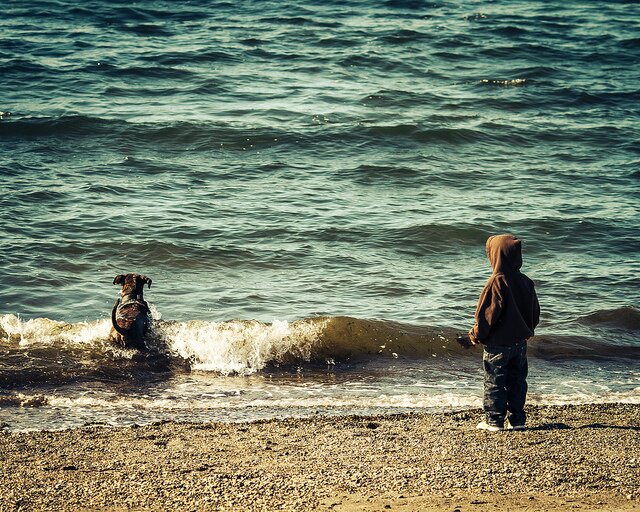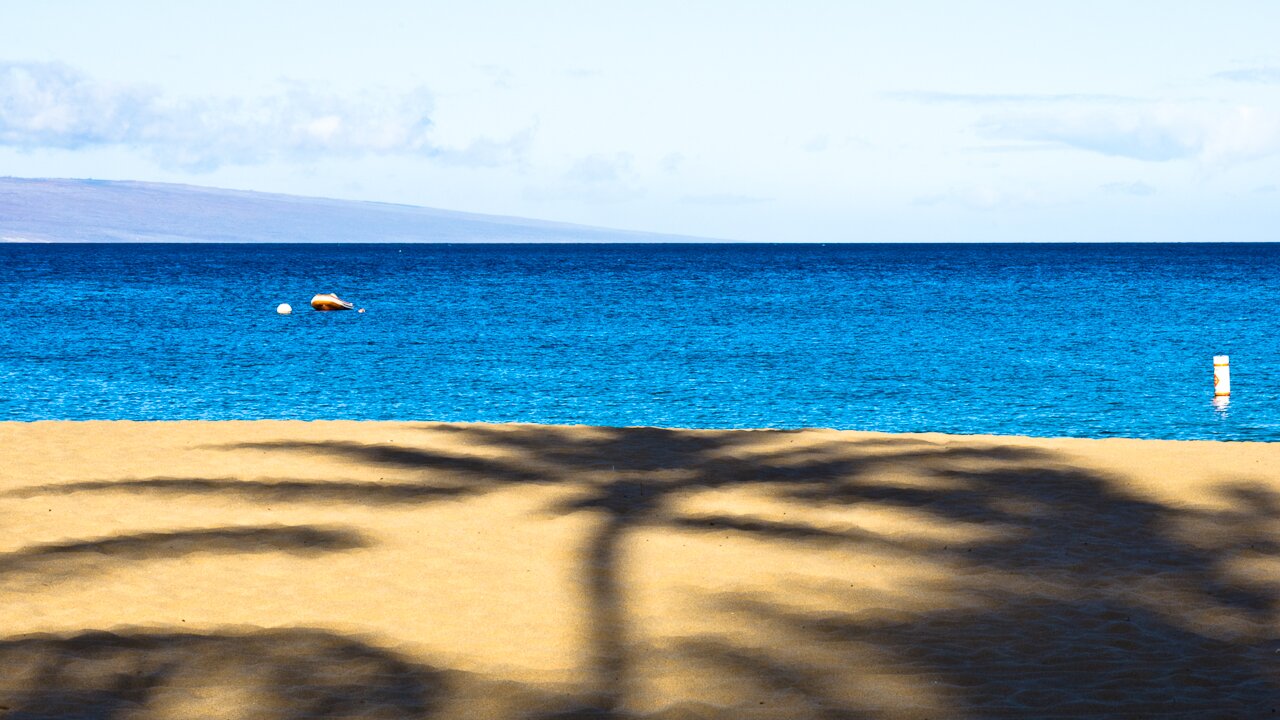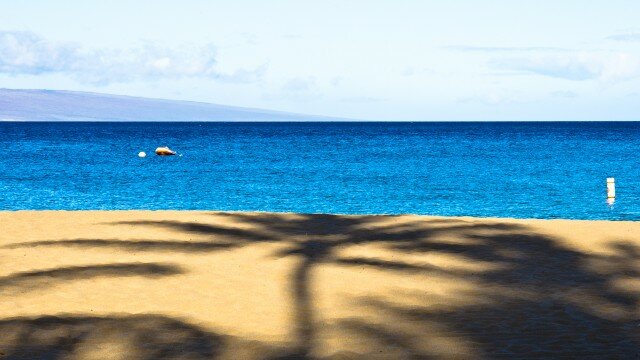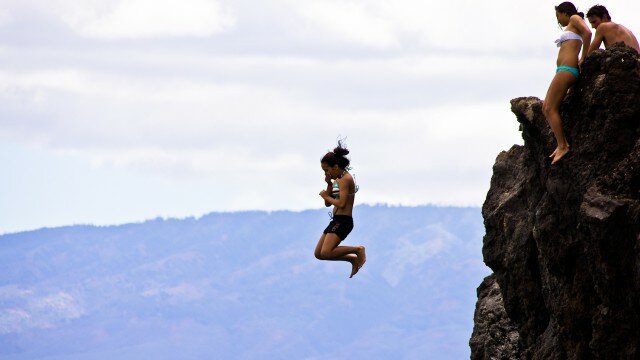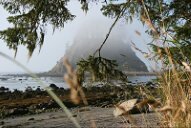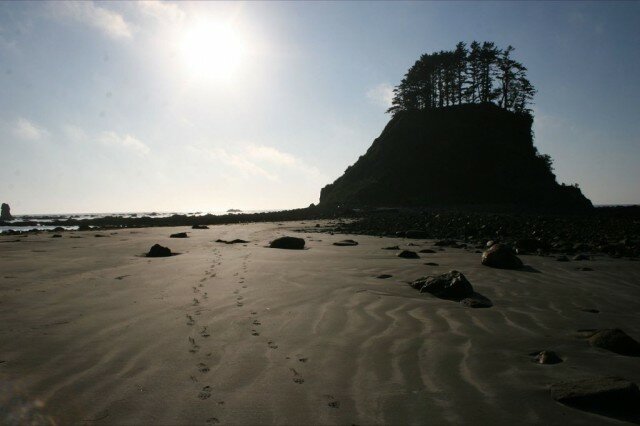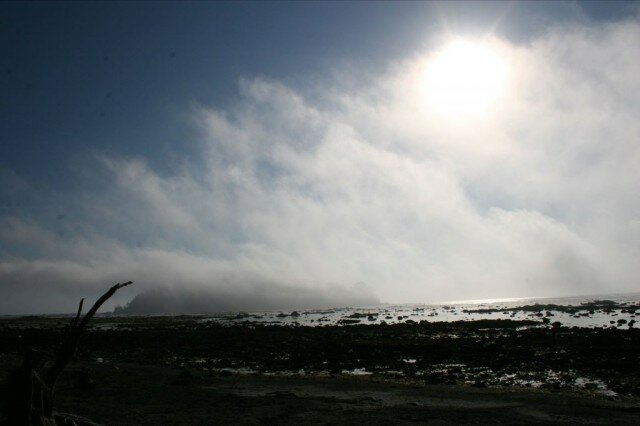In fall, the Seattle resident’s fancy often turns to thoughts of wintering on a tropical island somewhere. On November 30, the sun will set here at 4:20 p.m. Cliff Mass is already doing his snow dance. But the Hawaiian Islands are direct flights away on both Hawaiian Airlines and Alaska Airlines.
I made the journey for the first time last Labor Day weekend, and I’m in a position now to tell you that they’ve got a pretty good thing going out there. Even the jet lag works in your favor: a Seattle visitor wakes around sunrise, and gets sleepy at 9 p.m. You don’t even need to time shift if you don’t want to.
Certainly in comparison to winter in Seattle, I am not persuaded that there’s a bad choice to make in terms of a Hawaiian getaway. You can rent a secluded villa, you can stay in a pick-your-star hotel, you can browse an assortment of resorts that cater to tourists of every demographic. You can spend your time snorkeling or sunbathing; hiking, biking, or kayaking; catching sunrise from atop a volcano or sunset with a mai tai in hand. There are food festivals, hula festivals, and film festivals.
No matter what draws you away from the mainland, some night in the darkness with the surf in your ears, you’ll imagine you’re a bird alighted on a rock in mid-ocean. The enormity of the Pacific depths–you see it in the stained blue out to the horizon, but in daylight it’s a postcard. At night, it’s alive and immense. By the time you wake, it will have scoured away all the lesser cares that bedevil you.
For myself, an inaugural Kaanapali food festival was the draw, and while on Maui, I stayed at the Sheraton Maui Resort & Spa. I flew into Kahului airport, and then arranged transportation to Kaanapali in western Maui. The drive takes 45 minutes to an hour, and a shuttle bus will cost about $50. Taxis make the trip for about $100. If you don’t mind making transfers with luggage, the public bus system will get you there for $2. You can also rent a car.
The beach at Kaanapali is fronted by a series of resorts and hotels, all of which share a 2-mile promenade that gets heavy use all hours of the day by walkers and joggers. I had worked out a mutually beneficial agreement on price with the Sheraton, since this was a working vacation, but even so it felt a bit glamorous to step into my junior suite in Building 2, with its ocean-view balcony. After reopening from a three-year renovation in 2007, they’d decided to spruce the rooms up again in 2011, to the tune of $6.5 million.
Coincidentally, the Sheraton is, like Seattle Center, celebrating its 50th year. It has expanded in the intervening time, but the original building by George Wimberly still nestles the Black Rock outcropping, like a stacked series of shells. All the public space, then, was up top, with the guests’ rooms on the cliffside descent. It remains a breathtaking viewpoint, and in its way a kind of sister architectural landmark to the Space Needle. You’ll feel at home.
The resort now boasts more than 500 rooms on its 23 acres, the majority of which have ocean views. But if you turn your back to the ocean and look inland, there are equally dramatic views: Across an 18-hole, manicured golf course, the land rises steeply into a cloudcap that sends phantom mists to cool overheated beach blanketers. No matter where you are on the property, Maui’s beauty keeps smacking you in the eye.
After getting lost a few times, I downloaded the Sheraton Maui app for my iPhone, which includes a map that tells you where are: the tennis courts, spa at Black Rock, Mai Tai and Cliff Dive bars, Black Rock Steak and Seafood restaurant, Teppan-yaki Dan, and towel kiosk. You can make reservations for dinner or a massage with it. I can vouch for the massage being a brilliant idea.
I spent a good deal of time at the Cliff Dive bar, which has a happy hour and dishes built around pulled pork. It is also worth ordering the Ahi Ahi Benedict at Black Rock Steak and Seafood. (Prices on resort restaurant food in Maui reminded me of Iceland–if it’s not a pineapple or pork, it will probably run you more than you’re used to “back home.” This isn’t gouging so much as a reflection of costs peculiar to islands.)
At Kaanapali, you are just up the road from Lahaina, once a whaling village, though these days it’s your wallet or purse that’s more likely to be harpooned. (If you’re a guest at the resorts, you can hop a shuttle bus that travels between them, and will drop you at Lahaina. Or there is the Sugar Cane Train.) Lahaina is also where you can find West Maui Cycles–they have cruisers for tooling around town, and hybrids for trips along the incredibly scenic coastal highway. You’ll see lots of snorkelers as you pass Honolua Bay. (Tip: Bring plenty of coconut water.)
That inter-resort shuttle is complimentary for resort guests, as part of your $25-per-day resort fee, which also provides you with free internet and beach towels. Depending on the length of your stay, you might not feel a great need to leave the resort. Sun, spa, sushi–it’s all within reach. But a concierge can help you plan excursions, if you’d like to explore.
That sunrise trip to the volcano is a bit of an all-day trek from Kaanapali (and there’s a good chance you’ll find yourself in a cloud), but Seattleites in particular might like to tour the Kaanapali Coffee Plantation, where MauiGrown Coffee comes from. They grow four varieties: Yellow Caturra, Red Catuai, Typica, and Maui Mokka, the last of which cries out for a Clover-machined cup. Tours take you out into the fields to taste the raw berries. Maui Country Farm Tours will be happy to show you around the local artisan growers–at O’o Farm, you get lunch while you’re there. It’s a different side of island life than you may be used to.
The Sheraton Maui pours Maui Brewing Company beers, but the brewery itself is just up the road from Kaanapali. If you’ve been to the Elysian, it’ll smell familiar. Their Bikini Blonde lager goes down very easily, but at the brewery you can taste their Hawaii 9.0/Wee Heavy Scottish ale, a 2012 gold medal winner at the Great American Beer Festival. That and their Doppelbock are proof that they are serious about all kinds of beer, not just beach-side refreshment. If you are a beer fan, this is a destination.
One of Maui’s biggest fans was Mark Twain, who as a young correspondent set out from San Francisco to alert readers to the glories of the islands. Years later he still prized the memories: “I never spent so pleasant a month before, or bade any place goodbye so regretfully. I have not once thought of business, or care or human toil or trouble or sorrow or weariness, and the memory of it will remain with me always.”
Twain tried “surf-bathing,” as he was told it was called, but did not quite get the trick of staying on the board, which shot off without him. He did catch the sunrise from the dormant volcano Mount Haleakala. Here, see if this sounds worth it:
We climbed a thousand feet up the side of this isolated colossus one afternoon; then camped, and next day climbed the remaining nine thousand feet, and anchored on the summit, where we built a fire and froze and roasted by turns, all night. With the first pallor of dawn we got up and saw things that were new to us. Mounted on a commanding pinnacle, we watched Nature work her silent wonders. The sea was spread abroad on every hand, its tumbled surface seeming only wrinkled and dimpled in the distance. A broad valley below appeared like an ample checker-board, its velvety green sugar plantations alternating with dun squares of barrenness and groves of trees diminished to mossy tufts.
